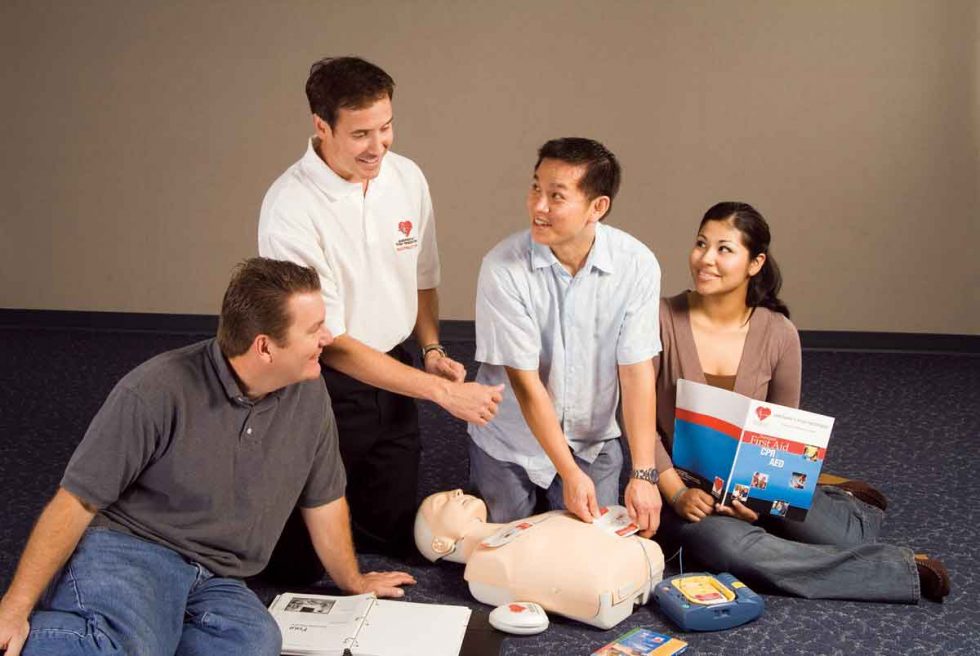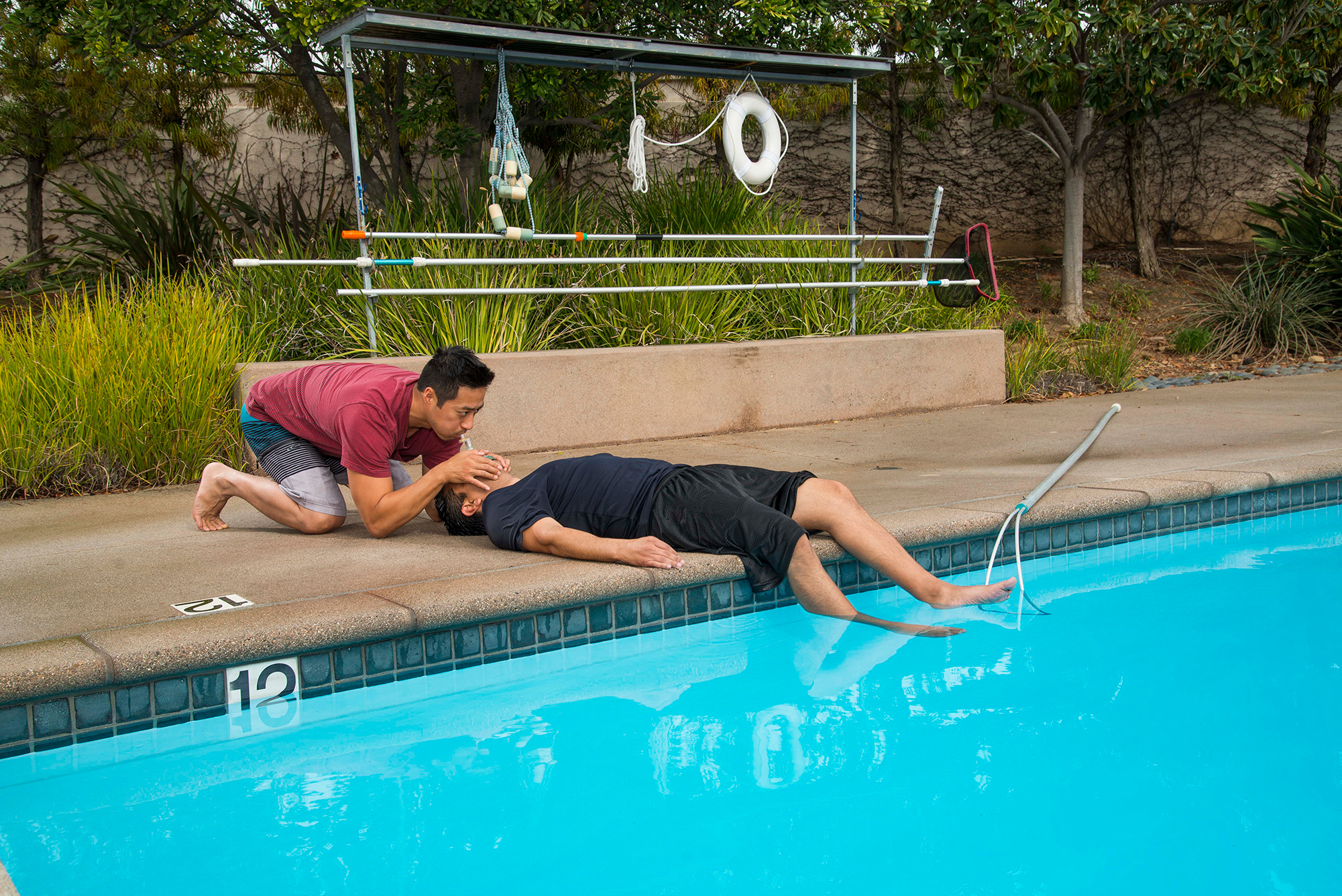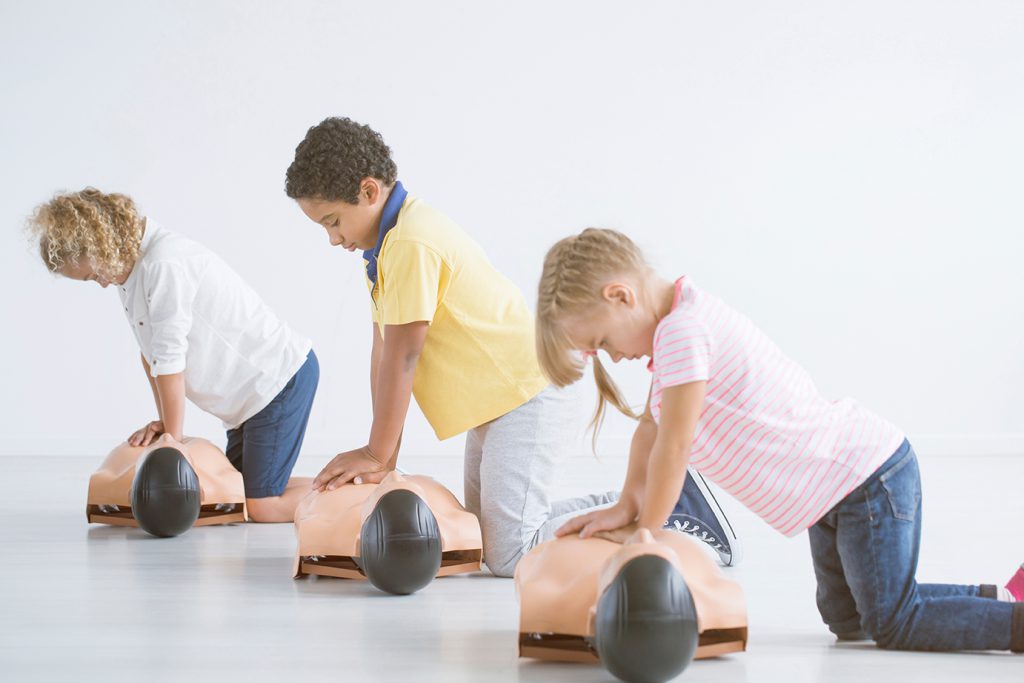Concerns about performing CPR incorrectly, injuring the victim, and a reluctance to provide mouth-to-mouth ventilations are a few of the reasons people don’t learn how to perform CPR. But, if you were on the ground and you needed assistance, wouldn’t you want someone around you trained in CPR?
In this article, we’ll address common myths about CPR and why it’s important to learn and practice this life saving technique.
First, let’s take a look at some shocking and upsetting statistics.
CPR training is an essential skill for parents, carers, and a requirement for many well-paying jobs. Unfortunately:

Statistics show you are more likely to perform CPR on someone you know versus a stranger. Approximately 80 percent of cardiac arrests occur in the home.
Furthermore, International Liaison Committee on Resuscitation (ILCOR) guidelines prioritize chest compressions over mouth-to-mouth. Studies show performing chest compressions alone is effective. This is known as Hands-Only CPR. That said, there are two circumstances where mouth-to-mouth ventilation may increase the chance of survival: if the victim is a child, or if the rescue is due to a drowning accident.
During an Emergency First Response© (EFR) class, you’ll practice administering mouth-to-mouth on a mannequin. Our students also learn to use barriers (pocket masks) to practice safe and effective delivery of rescue breaths.
CPR, like other physical skills, can be easily mastered with sufficient hands-on training and practice. How easy? A recent study found 86 percent of children ages 9-18 could correctly perform CPR after receiving hands-on training.
The steps are fairly simple; however, you cannot learn how to perform CPR effectively by watching a video. In a hands-on class, you’ll use a CPR training mannequin to learn exactly where and how hard you need to press to provide effective chest compressions.
If you are reluctant to learn CPR for fear of “doing it wrong,” or causing physical harm to the victim, just remember as a bystander, the only wrong thing you could do is nothing at all.
CPR stands for cardiopulmonary resuscitation, more specifically, the act of pumping blood to the brain in an unresponsive victim. When the heart stops, brain tissue starts to die within three minutes. Unfortunately, the average emergency response time is seven minutes or longer.
Average Ambulance Response Times
When every second counts, CPR can make a difference. Performing CPR can, in some cases, double a victim’s chances of survival.

CPR can save the life of someone who is not breathing and has no heartbeat due to asphyxiation, cardiac arrest, drowning, electrocution, or a heart attack. Even if you and your loved ones are in good health, accidents do happen.
In an internationally-accredited EFR CPR course, you’ll learn how to:
Evaluate a victim’s condition and determine whether they need CPR Calmly respond in an emergency Use an Automatic Electronic Defibrillator (AED)The only way to learn CPR properly is through hands-on skill practice. If you truly want to learn how to save a life, find an in-person class with an experienced CPR Instructor.
In an EFR CPR class, you’ll gain the confidence and skills to respond in an emergency. You’ll practice real-world scenarios and your instructor will answer any questions and address any concerns you may have. Learn more about a CPR certification from EFR, view our accreditations, or find a CPR Instructor near you.
A big misconception about CPR is the act of pressing on the victim’s chest. CPR is not supposed to be gentle, and further injuries are possible. When doing CPR just know this, regardless of the potential injuries that can occur, you’re performing a life saving task that can potentially bring the victim back to life. If you’re performing CPR, you’ve gone through your checks – airways and breathing. After doing these check, you conclude there is no breathing, and your patient is unresponsive. You can’t leave them in a worse condition.

We hope this article pushes you to get certified. Find a course near you today, and get your friends, family, and neighbors involved. The more people who know CPR, the better the world will be.
Share This
